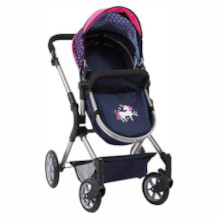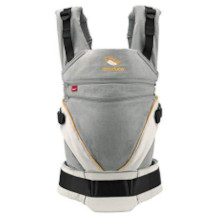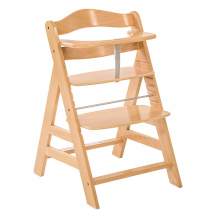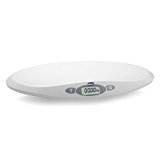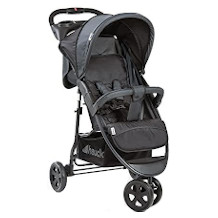Baby monitor purchasing advice: how to choose the right product
- What You Need to Know
- With a baby monitor, you can stay in touch with your baby from a distance and rush to him or her if necessary.
- The most popular models include audio baby monitors, which only transmit sound, and video baby monitors, which also provide a picture.
- The most important purchase criteria include range, sound at the receiver and low susceptibility to interference.
- Popular additional features include an intercom and lullaby function as well as a starry sky projector.
- For the lowest possible radiation exposure, the baby monitor should have an eco mode and a range control that can be switched off.
Control from a distance
Especially in the first weeks and months of their offspring’s life, parents spend most of their time with their baby and hardly dare to let it out of their sight for a minute. Even if they move only a few metres away from their sleeping child, they often worry that they might overhear it waking up and becoming restless. With a baby monitor, you can move away from your baby while staying in contact with him or her. To do this, place the receiver of the baby monitor, also called the baby unit, about one metre away from your baby and carry the transmitter, also called the parent unit, with you. As soon as your baby makes a sound, the baby unit transmits it to the parent unit. For example, you can enjoy a film with your partner in the living room and listen into the baby’s room at the same time. Thanks to the baby monitor, you can hear when your baby wakes up and rush to him or her before he or she starts crying.
The purchase of a baby monitor makes sense for many parents and can make everyday life with a baby much easier. In the following, we will introduce you to the different types of baby monitors and explain what you should look out for when buying one. In our advice section, we also answer important questions about radiation and electrosmog.
Different types of baby monitors
Baby monitors can be divided into different types according to various criteria, including their design and functions as well as the radio technology used:
- Baby monitors with sound transmission (audio baby monitors)
- Baby monitors with sound and image transmission (video baby monitors)
- Baby monitors with WLAN connection and app
- Analogue baby monitors
- Digital baby monitors
Other alternatives include landline telephones with a baby monitor function and baby monitor apps for smartphones or tablets.
The advantages and disadvantages of the different variants and for whom they are suitable are explained below.
Audio baby monitor: reliable sound transmission
The classic among the baby monitor types is the audio baby monitor, which transmits sounds. The baby unit, which is equipped with a microphone, is placed near the sleeping baby. As soon as the baby makes sounds, the microphone captures them and the baby unit transmits them to the parent unit. Images are not recorded and transmitted.
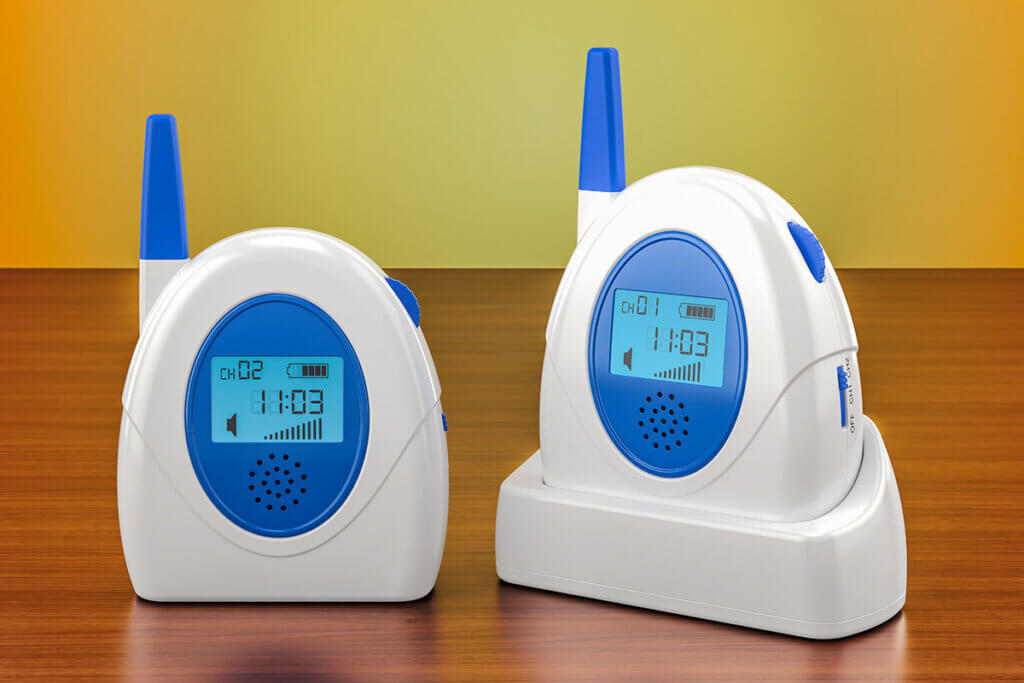
However, due to the lack of a camera in contrast to video baby monitors, audio baby monitors also have the advantage that the battery usually lasts longer and their prices are lower. In addition, audio models often have a greater range than comparable video baby monitors. Basically, audio baby monitors are suitable for parents who are completely satisfied with being able to hear when their baby is awake.
Pro points
- Often long range
- Comparatively long battery life
- Reasonable prices
Drawbacks
- No video surveillance
Video baby monitor: protection through image transmission
In addition to sound, video baby monitors also transmit an image, which they record with a camera integrated in the baby unit. This means they consume more energy than audio models and are usually a little more expensive. However, the image transmission has the advantage that parents do not have to rely on the transmitted sounds, but can also see their child from a distance.
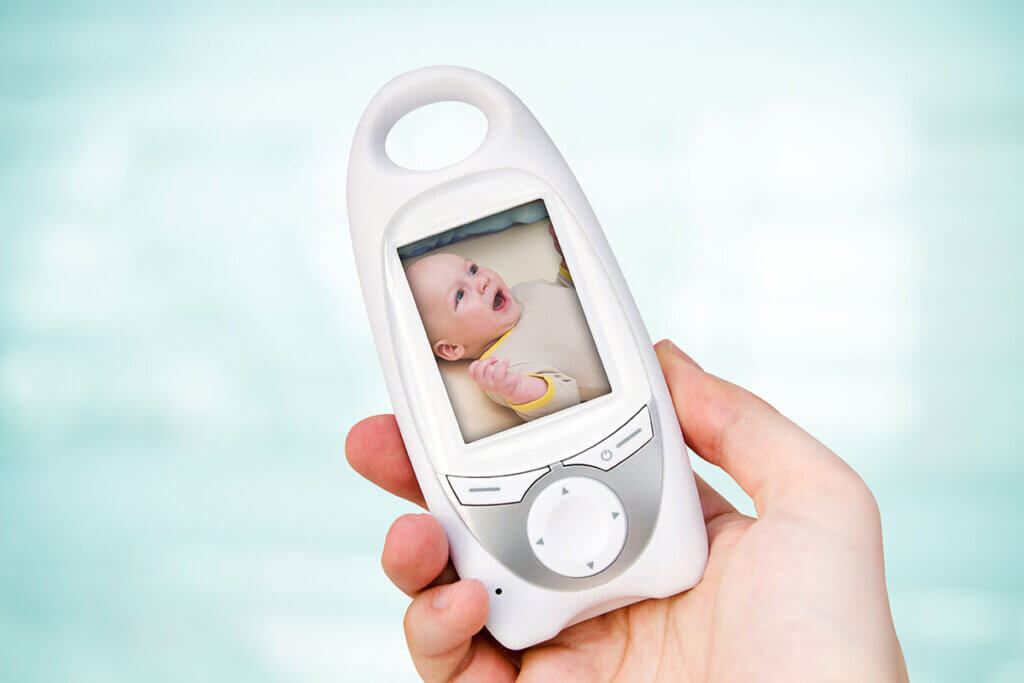
For example, if the baby monitor transmits a smacking sound or a soft grumble, you can first check via video whether your child is producing these sounds during sleep or is just waking up. For restless sleepers, this can save you some unnecessary trips. A video baby monitor is also practical for parents whose baby wakes up silently or very quietly. Usually, the cameras are equipped with a night vision mode so that you can see your baby well even in the dark.
Pro points
- Additional image transmission
- More security
- Integrated night vision mode
Drawbacks
- Comparatively high price
- High energy consumption
Baby webcams: Transmission over long distances
A modern variant of baby monitors are the so-called baby webcams, also called smart baby monitors or WLAN baby monitors. With such models, you usually only purchase the transmitter, usually a swivelling camera; your smartphone or tablet with the appropriate app from the manufacturer serves as the parent unit. This means that baby webcams are usually cheaper to buy than video baby monitors. In addition, such models offer the possibility to connect the transmitter (in this case the camera) with several receiving devices. For example, parents and grandparents can watch the baby sleep from different places at the same time.
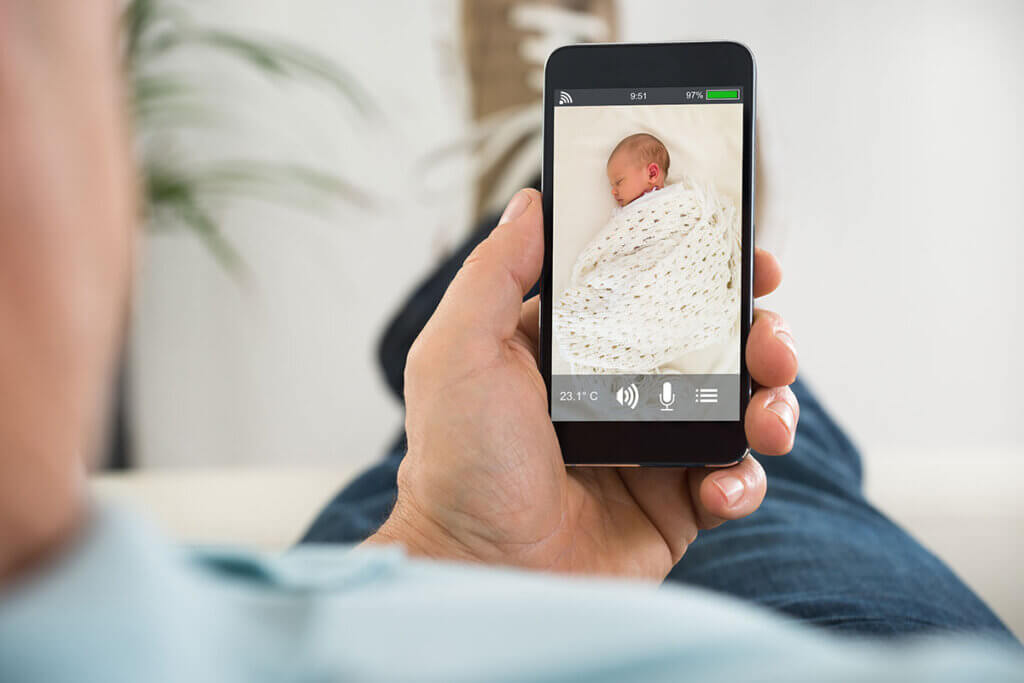
Like classic webcams, the devices transmit the signals via WiFi, which means they have an unlimited range – provided there is an internet connection. However, transmission via WiFi is also very susceptible to interference. Software errors, viruses or a poor internet connection can prevent transmission. In addition, transmission via the internet always carries a certain privacy risk.
Pro points
- Unlimited range
- Picture and sound transmission
- Can be connected to several receivers Comparatively cheap
Drawbacks
- Mobile device required
- Transmission susceptible to interference
- Danger of hacker attacks
- High energy consumption
Baby monitors with different radio technology: digital or analogue?
Basically, baby monitors can be divided into analogue and digital models with regard to their radio technology. Analogue radio technology is the older variant. Most modern baby monitors are digital devices. Digital radio technology has many advantages over analogue technology. For example, digital baby monitors send encrypted signals and are therefore tap-proof. They also have many more channels, which reduces possible interference. Another convenient feature is that the channel selection is automatic with digital models, whereas you often have to do this manually with analogue models.
In addition to the advantages mentioned above, modern digital baby monitors usually have a much greater range and better sound quality. If you want to see your baby as well as hear him or her through the device, you must choose a digital model, as the analogue ones only transmit sound.
What are the advantages of an analogue baby monitor?
The many advantages of modern digital baby monitors raise the question of why you should still choose an analogue model at all. The answer lies in the fact that digital baby monitors have one major disadvantage compared to analogue ones: Unlike analogue devices, they work with pulsed radio signals, the health safety of which is controversial. In order to overcome the objections to this technology, many manufacturers equip their digital models with mechanisms to reduce radiation, such as a range control that can be switched off or an eco-mode. However, if you want to exclude risks as far as possible, you should still go for an analogue baby monitor.
If you opt for the analogue version, you should be aware that you are also accepting some limitations, such as poorer sound and a shorter range. For example, the manufacturer Angelcare, which attaches great importance to the lowest possible radiation, produces analogue baby monitors.
Advantages of digital
- Transmits encrypted
- Automatic channel selection
- Interference-free transmission
- Long range
- High sound quality
- Picture transmission possible
Advantages analogue
- No pulsed electromagnetic radiation
What do DECT and FHSS mean?
These are two widespread digital radio technologies. The technology “Digital Enhanced Cordless Telecommunications”, DECT for short, is used among other things in cordless telephones and smartphones. Devices with this technology send bundled digital signals, while the transmitter and receiver are connected continuously in analogue.
The abbreviation FHSS stands for “Frequency Hopping Spread Spectrum”. Transmitters with this technology continuously change the radio frequency at intervals of a few milliseconds and in this way reliably avoid signal conflicts with other devices. This method is known primarily from data transmission via Bluetooth.
Currently, more digital baby monitors use DECT technology. However, there are no major differences between the two variants. Both transmit with electromagnetic radiation and transmit signals in encrypted form, reliably and largely without interference.
Landline phones and apps as an alternative: rather unsuitable
As an alternative to the classic baby monitor, there are cordless landline phones with a baby monitor function as well as baby monitor apps for the smartphone. In a cordless telephone with baby monitor function, the handset serves as the baby unit. The hands-free function picks up sounds. As soon as these exceed a set volume, the handset calls a previously stored number and transmits it. If you decide to use a baby monitor app, you can turn your smartphone into a baby unit, so to speak. As with the landline phone with baby monitor function, you also set a noise threshold with the app and a phone number that is called when the corresponding volume is exceeded.
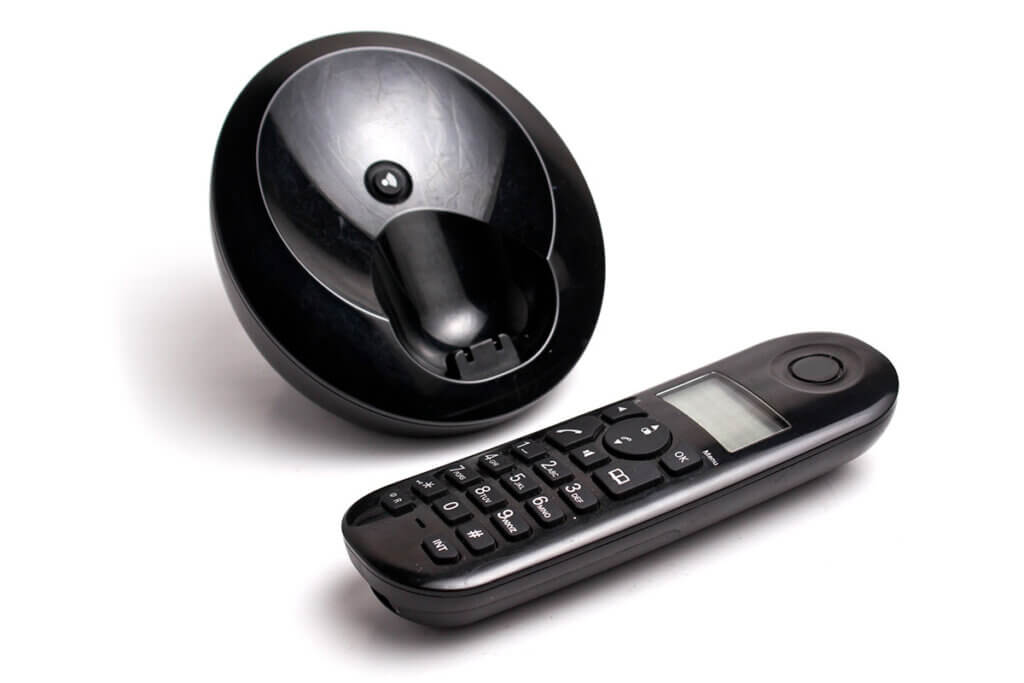
These alternatives are suitable for parents who only need a baby monitor in exceptional cases and do not want to buy an extra device for the few times they need it. For all others, we recommend a classic baby monitor because it usually transmits more reliably and with less radiation. In addition, the operation is usually simpler and more user-friendly.
Important buying criteria
Numerous manufacturers vie for the consumer’s favour with their models, and especially the inexperienced can quickly feel overwhelmed by the large selection of baby monitors. To help you with your purchase decision, we highlight below what you should look for when making your choice.
The range
One of the most important criteria for buying a baby monitor is the range, i.e. the maximum distance that can exist between the baby unit and the parent unit without the connection being interrupted. In general, digital baby monitors have a longer range than analogue ones. The range you need depends on the rooms in which you want to use the baby monitor.
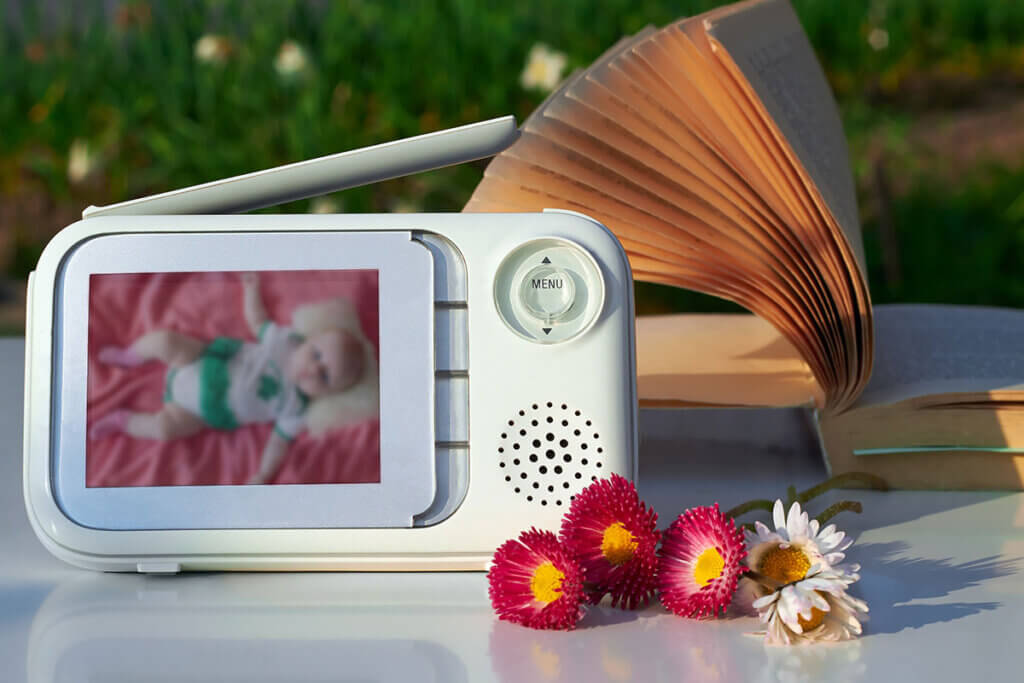
Manufacturers usually state the maximum range of their device for indoors and outdoors. Typical values are about 50 metres indoor and 300 metres outdoor range. For an average-sized flat in Germany, these values should be sufficient in any case. For use in a large house with several floors, you should make sure that the indoor range is particularly large. You must bear in mind that walls, ceilings and pieces of furniture between the transmitter and receiver attenuate the reception strength and reduce the range.
Sound quality
Good sound quality at the receiver is important so that parents can distinguish a sleepy grunt from a whimper or cry. If the sound is very tinny and noisy, it is difficult to perceive nuances. Unfortunately, in most cases it is not possible to test the sound quality of the baby monitor before buying it. However, reports of other users’ experiences and test reports offer some clues. Among others, Stiftung Warentest has tested baby monitors for their sound quality.
The response threshold
Baby monitors usually only transmit signals when a certain volume is exceeded. This limit is called the response threshold. If the baby remains quiet for a longer period of time, the device switches to standby mode. Ideally, the response threshold is adjustable in several steps so that you can adapt it to your child. For example, if your baby whimpers softly rather than crying loudly, you should set the response threshold as low as possible.
The power supply and the operating time
The baby unit of many baby monitors is equipped with a fixed power supply unit that provides it with electricity. Since it usually has a fixed location next to the baby’s bed, battery operation is not necessary or useful here in most cases. In contrast, most parent units can be operated both with a detachable mains adapter and with rechargeable batteries or batteries. Battery operation is particularly useful if you move around a lot with the parent unit or if there is no power socket nearby.
If you want to use the parent unit in battery mode, you should pay attention to the battery life that is usually specified by the manufacturer. However, you should bear in mind that this is usually the maximum battery life, often also in the energy-saving eco mode. If the parent unit is in continuous operation and you use various additional functions or move further away from the baby unit, the battery will run out much faster. The manufacturer Babymoov promises a particularly long battery life (24 hours) with its model Video-Babyphone YOO-Travel, which was specially designed to be taken along on trips.
User-friendliness
The start-up and operation of a baby monitor should be as intuitive as possible. Simple audio baby monitors without many bells and whistles usually have only a few buttons whose function is ideally self-explanatory. With more feature-rich models, a comprehensible instruction manual that explains all functions well is very helpful, especially for the inexperienced. A good baby monitor clearly signals to the user with the help of signal lights that the parent and baby units are connected to each other. If the battery is low, the range is exceeded or the connection is interrupted, parents should be clearly warned – for example, by a red light and an insistent signal tone. In addition, the parent unit should ideally be light and compact so that you can carry it comfortably with you. A carrying clip for attaching to clothing is practical.
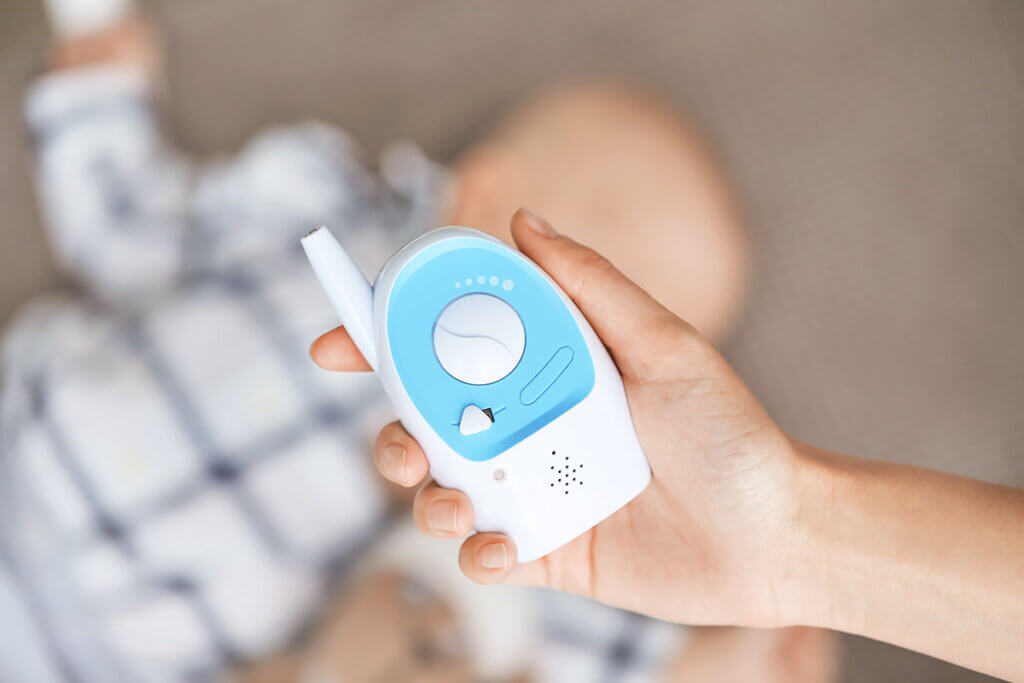
The price: How much does a baby monitor cost?
The different models sometimes differ considerably in price. For example, simple audio baby monitors are available from about 25 euros, while you have to spend up to 200 euros for a video baby monitor with numerous additional features. Roughly speaking, baby monitors can be divided into three categories in terms of price. In the lower price segment, you will find audio baby monitors with few additional features for 25 to 50 euros. The middle price segment includes video baby monitors with few additional features and audio models with a few extras for 50 to 100 euros. In the upper price segment, you will find video and audio models with many extras for 100 to 200 euros.
Functions and extras
First and foremost, baby monitors are of course used to monitor the baby from a distance. Many manufacturers equip their models with various additional features that can be quite useful. We present some of the most popular ones below.
Breathing and movement control
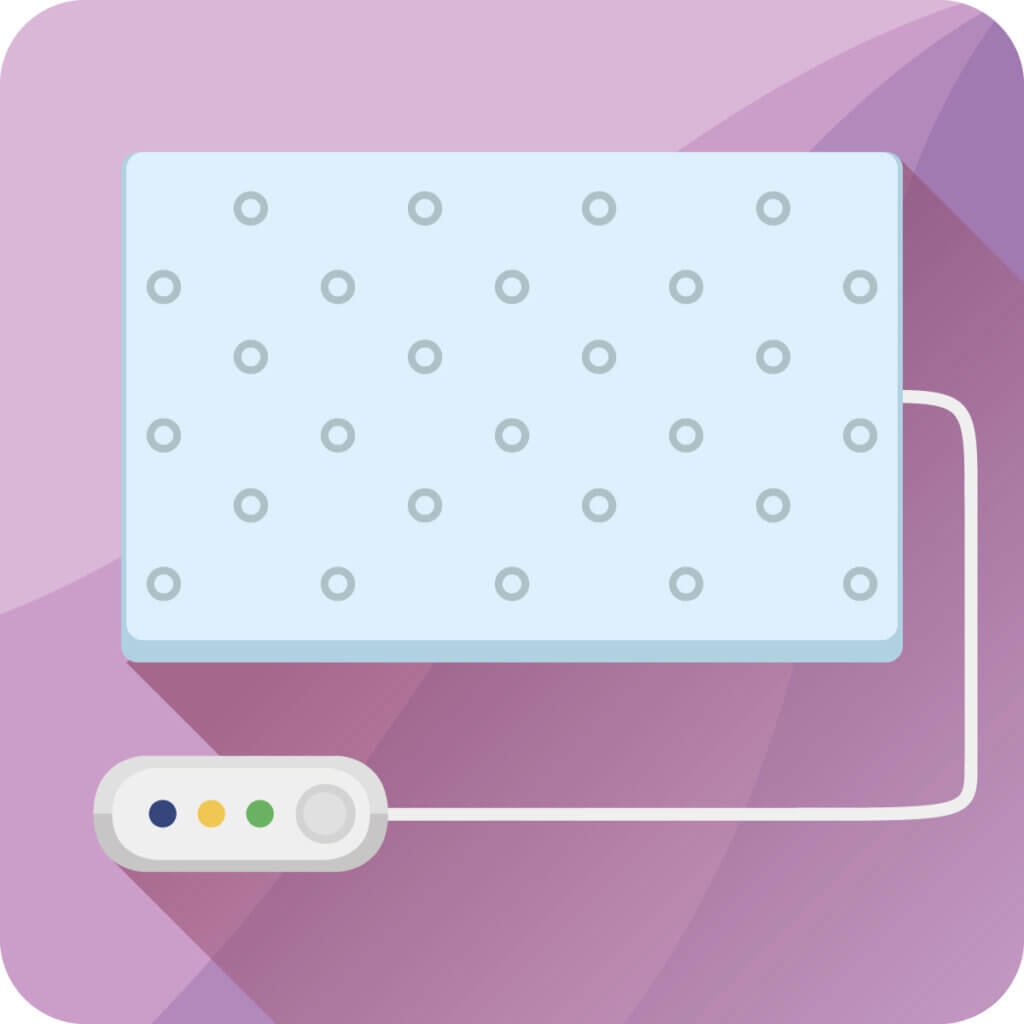
A movement sensor mat that you place under your child provides additional control. It registers the baby’s movements and breathing and triggers an alarm if it does not register any movement for more than 20 seconds, so that parents can be alerted and intervene. Only Angelcare currently offers such mats in combination with a baby monitor.
Room temperature sensor

Some baby monitors in the middle and higher price segments are equipped with a temperature sensor and display the room temperature. A glance at the baby monitor will tell you whether it is too warm or too cold for your baby. Ideally, the room temperature should be between 16 and 20 degrees Celsius. Models with a temperature display are offered by Philips Avent and NUK, among others.
Vibration alarm and noise level indicator
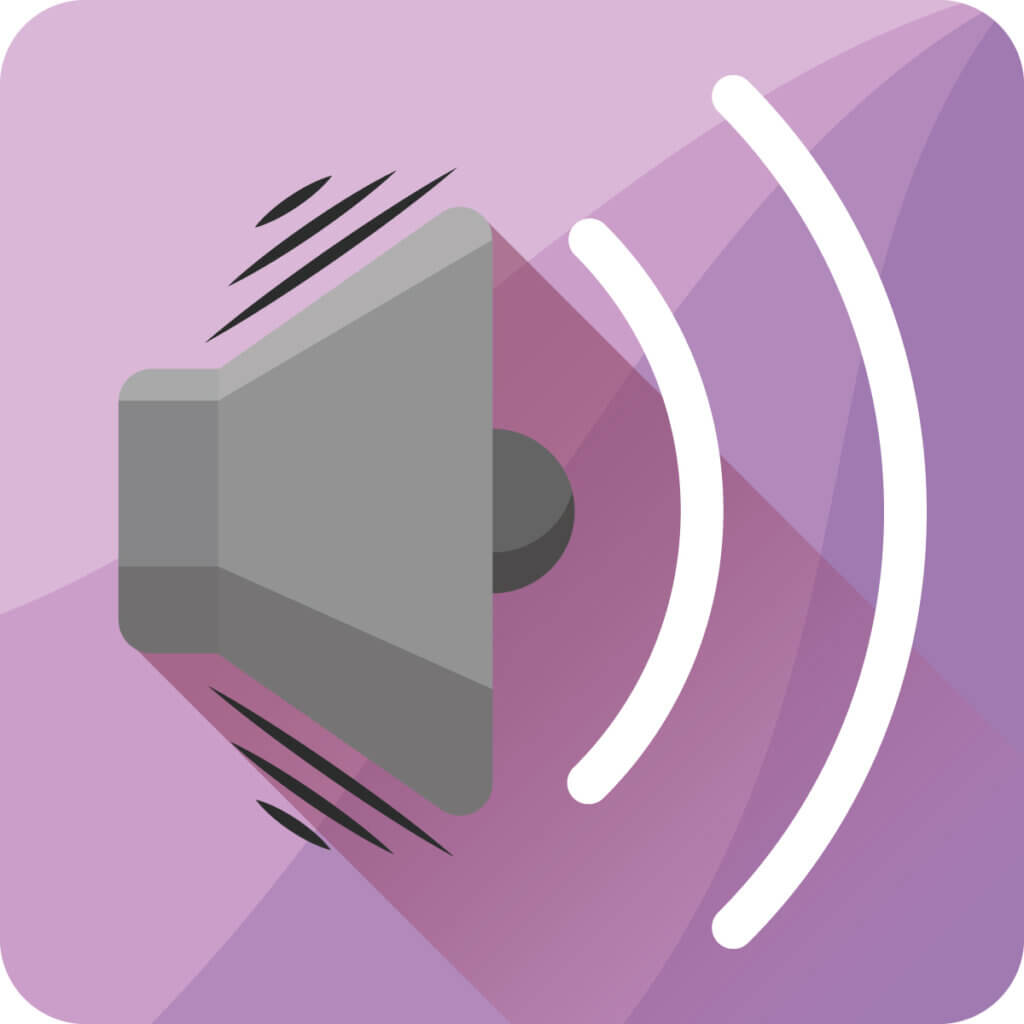
Most baby monitors not only transmit the baby’s sounds, but also warn parents when a certain noise level is reached by means of an optical or vibration alarm. For a visual alarm, the devices usually use a noise level indicator consisting of several LED lights on top of each other. The louder the baby is, the more lights light up. Both types of alarm are especially useful if you mute the speakers on your parent unit.
Intercom function

Baby monitors from the lower price segment often transmit unidirectionally, i.e. only from the baby unit to the parent unit. On the other hand, many models in the middle to higher price segments are equipped with an intercom function and transmit signals in both directions, i.e. bidirectionally. This allows you to answer your baby or toddler directly while you are on your way to them. An inexpensive baby monitor with an intercom function is, for example, the Rigi Digital model from the reer brand.
Music box function

Baby monitors with a music box function are especially popular with small children. Such models have integrated sleep melodies that create a soothing atmosphere for falling asleep. Among others, the higher-priced models from NUK and Philips Advent are equipped with a music box function. With most devices, you start the lullabies on the baby unit. It is practical if you can also start or stop the music with the parent unit without having to go into the nursery.
Night light

Most baby monitors, even simple, inexpensive audio baby monitors like the reer Rigi Digital or the Audioline Watch and Care 60, are equipped with a night light function. The night light is located on the baby unit and can serve as a reassuring point of light for the baby as well as making it easier for the parents to find the baby. Depending on the model, you switch on the night light with the baby unit or the parent unit. More expensive models with many additional features are often equipped with a starry sky projector.
Radiation with baby monitors
Digital baby monitors transmit signals with high-frequency electromagnetic radiation – a controversial topic. In our advice section, we address the question of whether this radiation is dangerous for babies and how you can keep it as low as possible.
Is the radiation from baby monitors dangerous?
Baby monitors generate electrosmog, also called electromagnetic pollution or pulsed radiation, during their operation. So far, there is no satisfactory answer to the question of whether this radiation is harmful. Experts are not in complete agreement as to whether pulsed radiation is harmless or hazardous to health. In any case, the radiation produced by a digital baby monitor is no more harmful than that emitted by our smartphones or other electronic devices. Especially when it comes to your own offspring, however, in case of doubt, it is always better to be safe than sorry. Therefore, when using a baby monitor, you should try to keep the radiation as low as possible.
How to keep the radiation as low as possible
In general, analogue baby monitors work with much less radiation than digital models. If a short range is sufficient for your purposes and you do not need image transmission, you can choose a low-radiation analogue model. If you want to use a digital baby monitor because of its many advantages, you should make sure that your model has an eco mode and a range control that can be switched off. Both features ensure that the device works with reduced radiation and are now standard in modern baby monitors.
What are eco-mode and range control?
In Eco mode, the baby unit only goes on the air when it detects noise. Otherwise, it switches to standby mode, in which radiation and energy consumption are reduced to a minimum. Range control means that a signal exchange takes place between the baby unit and the parent unit at regular intervals to check whether the units are still connected.
In addition, the following tips will help keep your child’s exposure to radiation to a minimum:
- Keep at least one metre distance between baby and baby unit.
- Choose and use a baby unit with battery operation.
- Do not run the transmitter cable past the baby’s bed.
- Only switch on the baby monitor when it is really necessary.
- Always disconnect the baby monitor from the mains when not in use.
- Do not place the cot near power sockets.
- Remove unnecessary electrical appliances from the nursery.

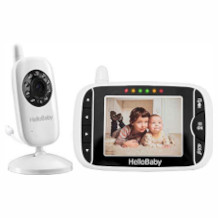

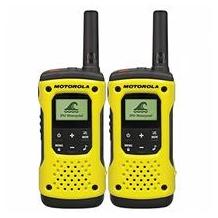
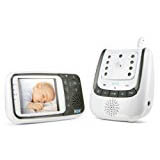
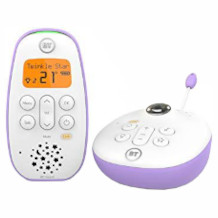

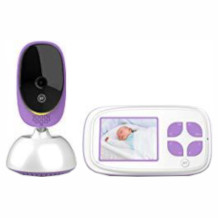


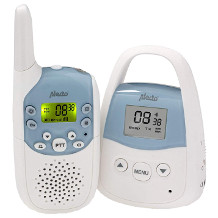


 2,521 reviews
2,521 reviews
